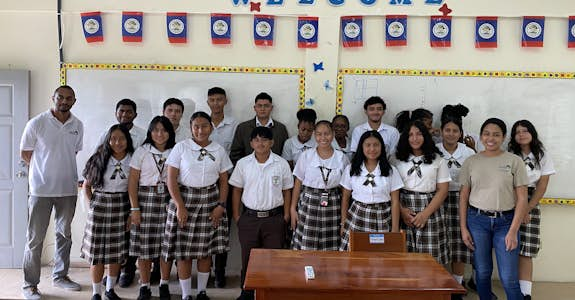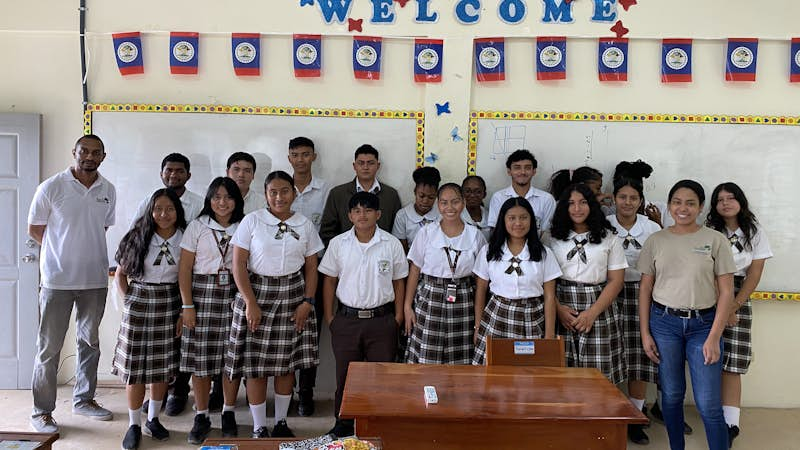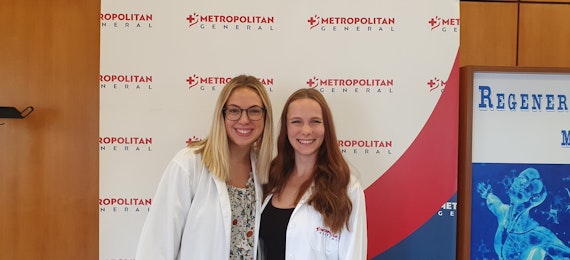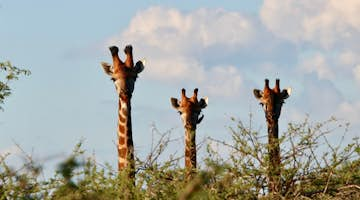
Habitat Conservation Internships in Belize
Tapir Mountain Nature Reserve is Belize’s first nature reserve. Its rich ecosystems are home to tremendous diversity of flora and fauna, including protected at-risk species, such as the Central American Spider Monkey, White lipped Peccary, Baird’s Tapir, Yucatan Black Howler Monkey, and the critically endangered Orange-breasted Falcon. This evergreen tropical forest is managed by Forest and Habitat Conservation departments in Belize, combining efforts to uphold its natural and cultural resources for generations to come. As a Habitat Conservation intern in Belize, students and young professionals are supported to assist a variety of initiatives, related to natural resource Management, research and monitoring, community outreach, and conservation administration.
What to expect from your Habitat Conservation internship:
- Support conservation and wildlife preservation efforts.
- Gain insight into initiatives designed to promote community conservation efforts.
- Develop diverse conservation experiences in a sub-tropical climate.
- Enjoy free time exploring the beautiful beaches and natural attractions of Belize.
Your internship abroad host organization:
- Marine conservation and climate adaptation organizations
- Reserves
- Eco-Parks
- Eco-Farms
Internship details
If you’re interested to understand how careers in conservation can come to life, look no further than a Habitat Conservation internship. Interns can learn how community-based organizations work, dynamically adapting to the needs of a changing world. Internship activities can combine education and outreach, research and monitoring, important administration, and essential resource management tasks. Come prepared to get stuck in, as conservation priorities and tackled from a range of perspectives.
This is an in-country internship, with accommodation and select meals included. You can explore remote Environmental & Marine Sciences internships, if you are looking for an internship program that you can undertake from home.
Habitat Conservation interns in Belize are supported to take a dynamic approach to first-hand learning in the field. Project availability can be impacted by seasonality and popularity of choice, so interns are required to come with an adaptable mindset. Preferences are supported and accommodated as much as possible but some flexibility may be required. Broad focus areas include:
-
Administrative activities: Assist to write grant proposals; create content for social media, environmental advocacy and public relations; develop educational resources; build out plans related to management, financial sustainability for community-based organizations, environmental policies and procedures.
-
Community education and outreach: Attend events related to environmental education and advocacy, visit schools to promote environmental education, assist local staff with facilitating outdoor educational activities for children related to conservation.
-
Research and monitoring: Avian, bat, biodiversity, entomology, speleology, herpetology, trail camera trapping and data analysis, wildlife photography/videography, hydrology, botany, and fish studies.
-
Natural resource management: Reserve maintenance activities, creation and installation of signage, boundary line maintenance, trash collections, mapping/cartography.
Note that some research and monitoring activities may present optional opportunities for overnight stays at ranger outposts within the Tapir Mountain Nature Reserve. When interns opt in for this camping experience, there are shared living arrangements (but rooming arrangements are not shared between genders).
In all cases, interns should expect that the first week of your experience will focus on settling in and gaining some introductory knowledge, as you will not “hit the ground running”. Rather, you should start with learning about the placement to gain an understanding of what you can build upon, develop, learn, and contribute. Ensure that you ask questions and provide feedback during the introductory period, so that your supervisor(s) understands how you’re progressing. This will help them to better understand important details, such as how quickly you learn, what you find challenging, what you find interesting, etc.
Understand that individual internship experiences vary, as the specific placement that you’re assigned will depend on review of your resume and your current level of studies and experience. Therefore, if you’re at a more introductory level, you should reasonably expect a more introductory internship. Likewise, if you’re interning for a shorter duration, you will have a different experience from someone who is interning for a longer duration. Placement preferences are considered but always subject to availability.
What are the career benefits of interning abroad as a Habitat Conservation Intern?
Habitat Conservation interns learn from a qualified and experienced supervisor, and can be involved in:
-
Biodiversity surveys.
-
Habitat restoration.
-
Wildlife monitoring.
-
Data collection for research.
-
Environmental education.
-
Sustainable agriculture support.
-
Infrastructure maintenance.
-
Environmental impact assessments.
-
Stakeholder collaboration.
-
Scientific reporting and presentations.
Professional development opportunities:
-
Build diverse experiences related to different priorities and responsibilities related to conservation work.
-
Learn about techniques and methodologies applied to habitat conservation fieldwork.
-
Enhance your understanding of how community engagement is used to support and promote sustainability objectives.
-
Gain practical skills and boost your employability, with guidance from Intern Abroad HQ’s Experiential Learning Curriculum to support your learning and cultural intelligence.
Are you eligible for this internship?
Submit a free application so we can confirm your eligibility and check availability for your preferred dates.
Not sure which program to join?
Belize photo gallery

Academic credit available for all internships
Get course credit from your college or university while completing your internship abroad or a remote internship program. It's a great way to meet your academic requirements and gain valuable experience at the same time.
Learn about course creditProgram fees
Applying for our Habitat Conservation Internship is completely free! The support package covers the assistance we provide in finding your internship and arranging your living accommodations in your host country, ensuring you thrive during your program.
Please note that a deposit of US$499 is required to confirm your place. The remaining balance (minus your initial US$499 deposit) is due at least 60 days before your internship start date.
Duration |
Program Fee (USD) |
|---|---|
| 4 weeks | $3,195 Equivalent to $114 /day |
| 5 weeks | $3,734 Equivalent to $106 /day |
| 6 weeks | $4,179 Equivalent to $99 /day |
| 8 weeks | $5,074 Equivalent to $90 /day |
| 10 weeks | $5,959 Equivalent to $85 /day |
| 12 weeks | $6,799 Equivalent to $80 /day |
- Airport pick-up
- Daily breakfast and dinner
- Accommodation
- 24/7 in-country support
- Program orientation
- Dedicated support before, during, and after your internship
- In-country guidance for social and tourist activities
- Sourcing and securing your internship placement
- Personalization of your internship plan
- Coaching from your supervisor
- Documented portfolio of your experiential learnings
- Academic credit facilitation
- International reference letter
- Certificate of Internship Completion
- Lunches
- All in-country transportation
- Visa (if required), flights, travel insurance (mandatory), vaccinations, criminal background check
- Transfer back to the airport at the end of your internship program
- Personal spending money for snacks, drinks, public transport, laundry, and leisure activities during your free time.
- A deposit of $499 (approximately 499) is required to secure your internship
- Balance of your Program Fee is due 70 days before your internship start date. The Program Fee payment can also be completed in installments through our Zero-Fee Payment Plan. Learn more.
- All payments attract a 5% transaction fee to cover international banking fees and currency charges.
- Terms and Conditions apply.
Weekends and travel
Outside of internship placement hours, interns have free time to experience sight-seeing and tourism activities in and around San Ignacio. Explore the vibrant downtown area of San Ignacio, with its diverse range of restaurants and markets. Discover nearby Mayan ruins like Caracol andXunantunich. Take a day trip to the magnificent Tikal in Guatemala. Embark on a leisurely horseback ride adventure to the mysterious ATM cave. Enjoy canoeing or kayaking in the scenic rivers. Visit attractions such as the Belize Zoo, iguana farms, and butterfly farms. Experience snorkeling and scuba diving in the tropical beach paradises of Placencia and Ambergris Caye. The local team will be happy to make travel and tourism recommendations. However, while you’re in Belize, these are just a few examples of the attractions you won’t want to miss:
-
Xunantunich: The second tallest structure in Belize, this Mayan ruin offers breathtaking 360-degree views.
-
Caracol: A magnificent ancient Mayan site that was once a bustling metropolis. Swim in river pools, visit waterfalls and explore the Río Frío cave.
-
Actun Tunichil Muknal (ATM Cave): This cave, ranked as the #1 most sacred cave by National Geographic, involves crossing rivers and navigating through ancient Mayan sacrificial areas by crawling, climbing, and swimming.
-
Beaches: Day trips to coastal towns such as Hopkins, Placencia, or San Pedro to enjoy a Caribbean beach escape.
Arrival and Orientation
Internships in San Ignacio, Belize begin every Monday of the year. Exceptions to this schedule may be made to this when start dates are shifted to avoid holiday disruptions, or closed when the program has already reached capacity. Interns may choose to spend a minimum of 4 weeks, up to a maximum of 24 weeks. Airport pick-up, accommodation, and select meals are included in the Program Fee.
The accommodation is covered from the Saturday night before the Monday start date - interns are required to arrive no later than the Saturday before their Monday start date, as all orientations are held on Mondays.
The typical port of entry is the Philip S. W. Goldson International Airport (BZE). Pick up from this airport is included in the cost of the internship Program Fee. Upon arrival, interns will be met, greeted, and transferred to the accommodation. (If you are planning to spend time independently in Belize prior to the internship and will not require an airport pick up, we can discuss alternative arrival logistics).
Orientation covers important details for your internship, including introductions, information about culture, customs, rules, expectations, safety, language lessons, cultural excursions, and more. Your specific internship placement orientation will follow the general orientation, as you’ll be shown how to travel to and from your internship and be introduced to the team you’ll be joining.
The last night of the accommodation is the Friday night of the final week, leaving interns free to depart on Saturday. Extra nights of accommodation can be arranged in advance, if requested, and are subject to availability. Return transportation to the airport is not included in the internship program fee but local coordinators can assist you to make arrangements, upon request.
Please note that all participants are advised not to book flights until they have first registered to confirm their internship placement.
Visa Requirements
Many nationalities do not need to acquire a visit in advance. Please check the Belize immigration website for details. Upon arrival, most travelers are permitted to stay in Belize for up to 30 days. To extend your stay, it will cost 200 Belize dollars for each additional 30 days (approximately US$100). Extensions can be arranged in-country at the Belize Immigration and Nationality Department. Please note that the requirements and costs for such visas and/or permits are outside the control of RISEWAYand are subject to change without notice.
Accommodation and WiFi
All interns in San Ignacio are hosted in homestay accommodation, located within the program headquarters. There are five rooms available, each with their own bathroom, fans and air conditioning. The rooms are spacious and can accommodate 3 to 6 interns at any given time. Bedding and furnishings are provided, as well as common areas such as courtyard kitchen and dining area. Standard amenities include whiteware (i.e. washing machine, stovetop, fridge, microwave) and clean linen (i.e. bed sheets, pillows, towels).
Homestay accommodation provides international interns with an extra layer of local support, while also providing a valuable opportunity to become immersed in the Belize way of life, meeting new people and engaging in the lifestyle. There are on-site coordinators available to provide assistance as and when needed.
Basic WiFi is available at the accommodation and internship participants may optionally purchase a local SIM card with data (you will need to ensure that your phone is unlocked for international use). The local team can assist you with this at the orientation, if need be. Please note that the accommodation WiFi is for study and communication purposes but may not be used excessively for streaming/gaming, as this will exceed the limit. Guests will be encouraged to purchase your own data for heavy intertest usage. Laundry can be done at local Laundromats at an additional fee.
For those seeking alternative arrangements for customized group bookings, additional/unique arrangements can be made (at an additional cost) upon request (subject to availability). Please enquire for more information.
Please note that the accommodation pictured in the photo gallery of this webpage is provided as an example. The exact room that you’re assigned may differ from the photos.
Meals
Internships in Belize include two meals per day, Monday through Friday, provided by the homestay (daily breakfast and dinner). During the week, interns need to budget independently for their own lunches, and on weekends, breakfast, lunch and dinner.
In Belize, the most common options for breakfast are stew, refried beans, and flour/corn tortillas (with habanero onion sauce!). You will find that meals are fresh, varied and balanced, and you can expect tortillas, beans, polenta, stir-fried vegetables, coconut curry, fresh seafood, eggs and rice.
It is important to be aware that vegetarian and other dietary requirements must be communicated in advance. There is an additional weekly surcharge if a gluten-free, dairy-free, vegetarian or vegan diet is requested. This is in order to provide specialty grocery items, which are often more expensive (e.g. soy milk, gluten free bread/pasta, protein supplements, etc). The extra cost is US$45 per week, which will be charged in advance. If there are special snacks you like to have, please budget for them and take care of your own preferences independently.
Interns in Belize may find US$250-300 per week to be sufficient for lunches, weekend meals, extra snacks and treats, and in-country transportation, but this budget can vary depending on personal spending habits. Extra budget for weekend activities should be researched and planned for in advance.
Essential country information
| Capital | Belmopan |
| Population | 405,272 thousand |
| Languages | English |
| Currency | Belize Dollar |
| Time zone | UTC−06:00 |
Weather and climate:
Belize has a tropical climate with distinctive wet and dry seasons. The climate varies by region, as temperatures change according to elevation and proximity to the coast. (Coastal and elevated areas are typically cooler).
The hottest months of the year in San Ignacio, Belize, are usually March through June (May is often the hottest month). This period is hot, humid and mostly cloudy. During this period, the average daily high is above 91°F (33°C). The temperatures are cooler from November through February. In January, which is usually the cooler month, the temperature typically ranges from 66°F - 82°F (or from 19°C - 28°C).
The chance of rainy days in San Ignacio varies throughout the year. The months that typically see more rain are late May through late November. September is often the rainiest month. December through April can be a drier time of year.












































































